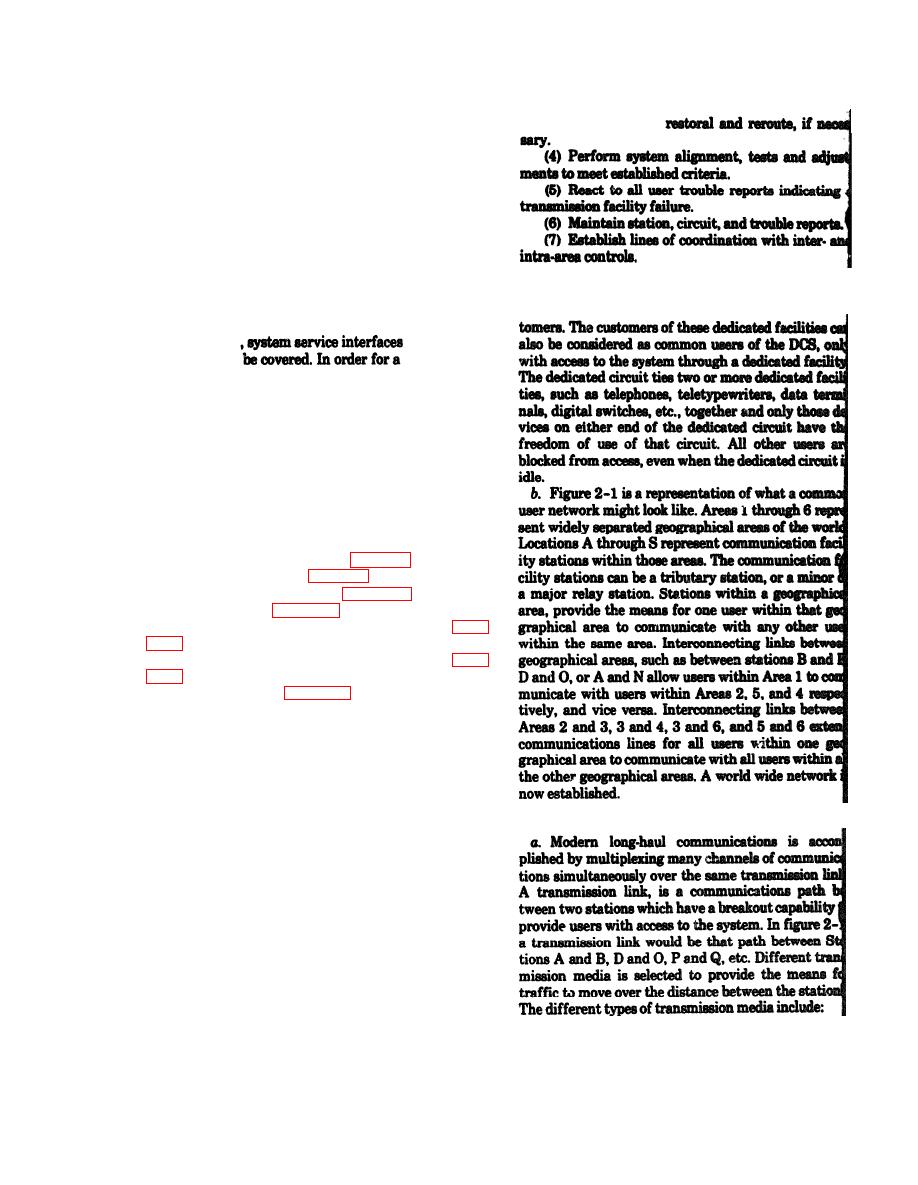 |
|||
|
|
|||
|
Page Title:
Section II. SYSTEM SERVICE INTERFACES AND TYPES OF SERVICE |
|
||
| ||||||||||
|
|
 TM 11-5895-1012-10
tion to test and coordinate activities of intermediate
accordance with TSO's.
TCF's, another TCF can be designated as an Intermedi-
(3) Initiate chit
ate Control Office. The ICO will be designated on the
service order at the time of layout and TCF personnel
have the general responsibility of the assigned seg-
ment as well as the following:
(1) Conduct in-service testing and take corrective
action in the case of signal degradation, including
those signals not alarmed by pilot frequencies.
(2) Activate, deactivate, and change the circuit in
2-7. Introduction
In this section
and the types
technical con-
of service will
troller to make the most efficient use of circuits and
systems available, an understanding of the overall
DCS and the facilities serviced is necessary. In addi-
tion to understanding the make-up of the DCS, the
technical controller should be familiar with the trans-
mission media used; communications facilities in-
volved; the facilities which use the DCS mainline
trunk routes as a transmission path; and the types of
signals which are generated by these facilities. The in-
formation covered in this Election is listed below to-
gether with appropriate paragraph references:
a. DCS common user network (para 2-8).
c. Communications facilities (para 2-10).
g. Types of signals (para 2-14).
2-8. DCS Common User Network
a A common user network is one that provides a set
number of channels of voice or data communications
for use by an even larger number of users on a shared
basis. A user of a communications network can be a
person making a telephone call; a communications cen-
ter originating or receiving many teletype messages,
data or facsimile signals; or a solitary teletypewriter
maintaining contact with another like machine. The
originating user am be linked to another activity with-
in the same geographical area or in another geographi-
cal area. The point to remember is that the available
channels of communications are shared by all or they
are for "common usage". Within the DCS the majority
of the available channels are for common usage. Dedi-
cated circuits, which make up the remaining channels,
are established to support the traffic originating at
dedicated facilities which provide communications of
(1) High Frequency Radio. This media can cover
common interest, high volume, or priority traffic cus-
|
|
Privacy Statement - Press Release - Copyright Information. - Contact Us |